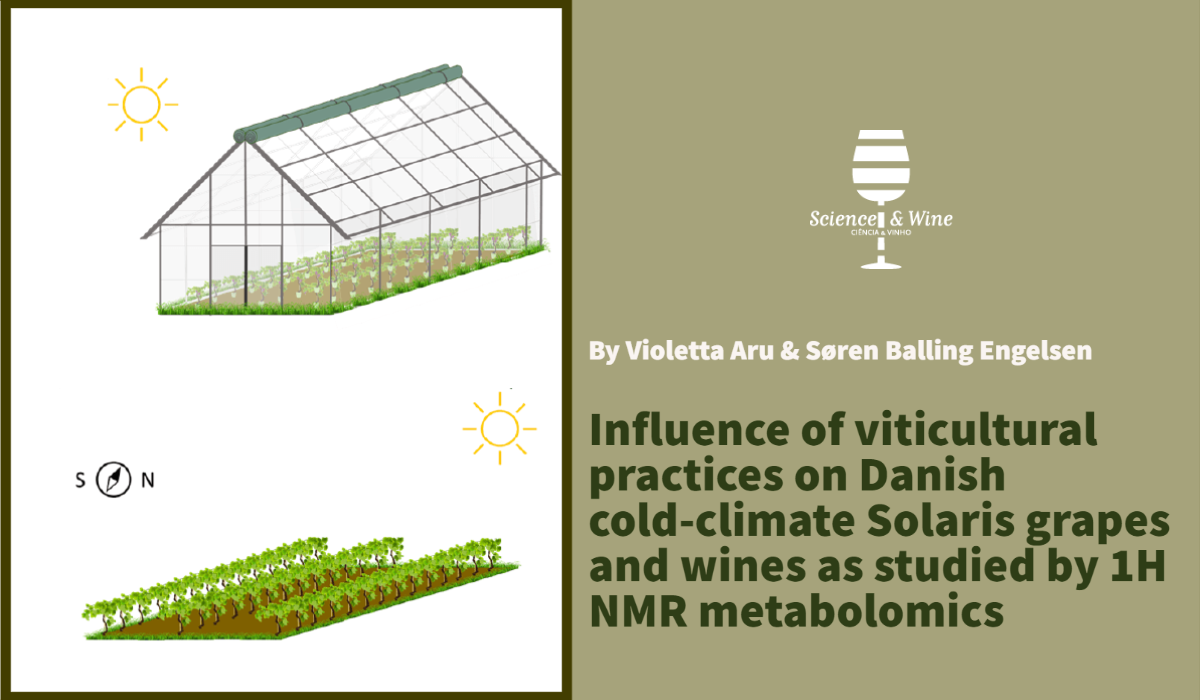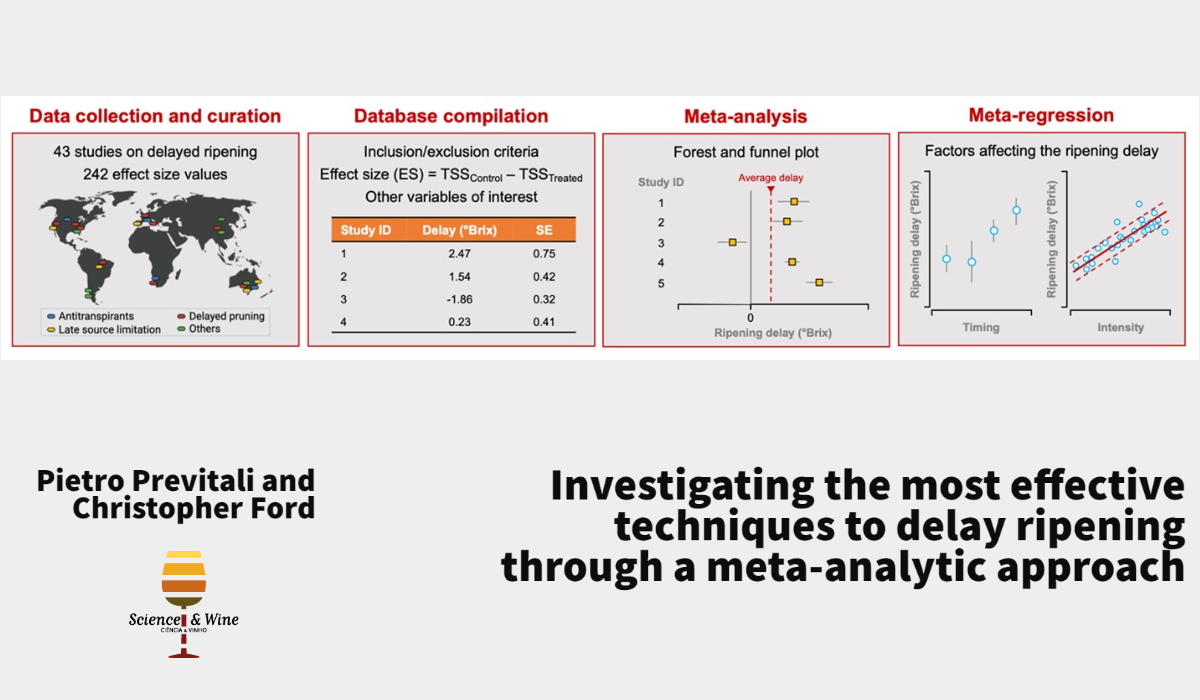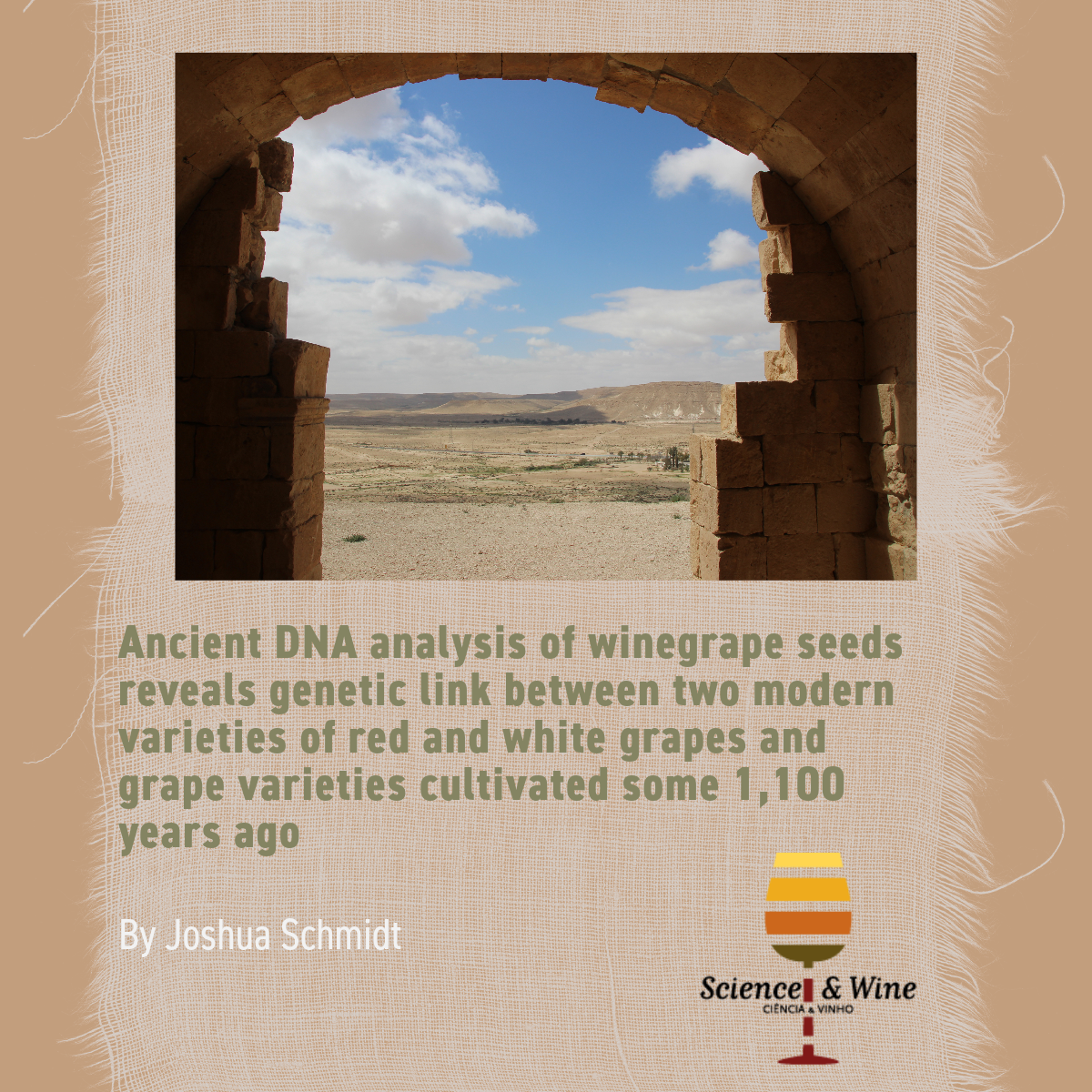One ancient seed was found to belong to the Syriki variety, still used to make red wine in Greece and Lebanon. Since winegrapes are usually named after their place of origin, it is quite possible that the name Syriki is derived from Nahal Sorek, an important riverbed in the Judean Hills. A second seed was identified as related to the Be’er variety of white winegrapes still growing in the sands of Palmachim on Israel’s southwestern Mediterranean seashore.

The vineyard yeast populations are influenced by… forests and wasps. [Forests influence yeast populations vectored by insects into vineyards]
In the vineyard, yeast communities impact the ripening and fermentation of grapes and are influenced by geographical location, climate, and soil characteristics. Despite the great advancement in our knowledge of the vineyard mycobiota, a key step of the process leading to the definition of the vineyard yeast community is still poorly understood: if geography, climate, and soil influence the mycobiota, potentially through selection, where do the yeast originate from, and how can they reach the vineyard? In this perspective, it is currently acknowledged that forests host several yeast species and that insects, particularly social wasps, can vector and maintain the yeasts known to populate the vineyard. Alas, the conveyance, fostered by insects, of yeasts from the forest to the vineyard has not been proven yet. In this study, we aimed to assess the existence of links between a potential natural source of yeasts (woods), the vectors (social wasps), and the composition of the vineyard mycobiota.

Highlights from the 3rd Science & Wine World Congress on Sustainability in Wine Production and Food Systems
The 3rd Science & Wine World Congress on Sustainability in Wine Production and Food Systems was held in Porto/Douro, Portugal from June 14 to 16, 2023. The congress focused on addressing the challenges and opportunities of sustainability in the wine industry and food systems, particularly in the Mediterranean region. Esteemed speakers, including professors, researchers, and industry leaders, gathered to share their insights and research findings.

The enigm of natural wines: a first step to shed light on them
Natural wine (NW) lacks an official or agreed definition, but it can be generally described as wine produced with organic or biodynamic grapes with minimal intervention in the cellar, and with minimal or no use of oenological additives. The present study aimed to test the hypotheses that self-defined NWs differ from conventional wines (CW) in their chemical composition and main sensory characteristics. The levels of conventional oenological parameters, turbidity, biogenic amines, ochratoxin A, ethyl carbamate, sulphites, chlorides, some metals, major, trace and Strecker aldehyde volatile compounds were determined in 28 wines, including natural and conventional Spanish commercial white wines. Wines were also sensory described following a labelled free sorting task.

Perceiving and Adapting to Climate Change: Perspectives of Tuscan Wine-Producing Agritourism Owners
It is now widely accepted that climate change is having a profound impact on the weather systems around the world. These, in turn, have a considerable effect on two important elements of the Tuscan economy: wine production and tourism. This case study sought to explore the relationship between the perception of Tuscan wine-producing agritourism owners of the potentially abstract notion of climate change and their concrete experiences as entrepreneurs. While recognizing the difficulties they face from climate change as viticulturists, as agrotourism owners they welcome the longer seasons which enable them to open in the formerly barren shoulder seasons but struggle with last-minute cancellations due to unpredictable weather in the area.

Influence of viticultural practices on Danish cold-climate Solaris grapes and wines as studied by 1H NMR metabolomics
The present multidisciplinary study aimed at investigating the impact of water deficit, defoliation, and crop thinning on Solaris’ plant and fruit development as well as on the bulk metabolic composition of Solaris must and wines as measured by FT-IR and 1H NMR. Overall, the results show that, from an agronomical point of view, Solaris has a remarkable ability to tolerate and recover from water stress.

Investigating the most effective techniques to delay ripening through a meta-analytic approach
Several vineyard techniques have been proposed to delay grape maturity in light of the advanced maturation driven by increasingly frequent water and heat stress events that are detrimental to grape quality. These studies differ in terms of their experimental conditions, and in the present work we have attempted to summarize previous observations in a quantitative, data-driven systematic review. A meta-analysis of quantitative data gathered across 43 relevant studies revealed the overall significance of the proposed treatments and evaluated the impact of different experimental conditions on the outcome of antitranspirants, delayed pruning and late source limitation.

Phenolic Compounds from Virgin Olive Oil: Approaches for their Synthesis and Analogues
Virgin olive oil (VOO) is the main fat consumed by populations in the Mediterranean basin, and phenolic compounds, minor components of this fat, are known to be responsible for diverse health benefits when consumed in a regular diet. According to numerous investigations, these benefits are mostly related to phenols such as tyrosol and hydroxytyrosol and secoiridoid derivatives such as ligstroside, oleuropein, oleocanthal and oleacein. These compounds are present in low concentrations, and for some of them, standards are not commercially available, hampering studies on the mechanisms underlying their biological activity. In order to contribute to a better knowledge of the bioactivity of these compounds and their metabolites, they must be available with high purity and in sufficient amounts for the assays. Chemical synthesis has been considered a convenient way to obtain these compounds. This Review will focus on the synthesis of representative VOO compounds, namely, ligstroside, oleuropein, oleocanthal, oleacein and analogues.

Effect of mannoproteins from different oenological yeast on pigment composition and color stability of red wine
In this work, MP-rich extracts from Saccharomyces and non-Saccharomyces yeasts were obtained by cell sonication and were characterized. The extracts were added to a red wine and color and pigment composition modifications were evaluated by CIELAB parameters and HPLC-DAD-MS, respectively, after cold treatment (to provoke colloidal instability) and storage at room temperature (to accelerate wine aging). Results indicate that the MP-rich extracts showed differences in their composition and in the structure of the MPs depending on the yeast species. They also had different effects on the stability of wine pigments, being the extract obtained from Torulaspora delbrueckii the one that provided the best results, by contributing to the colloidal and chemical stability of the coloring matter. Wines added with this extract showed concentrations of p-coumaroylated and caffeoylated anthocyanins 33.40% higher than the control wine after 4 days of storage at 4 °C.

Extra Virgin Olive Oil: Thermal Effects vs Region of Cultivation
Extra virgin olive oil is one of the superlative due to its health benefits. In this work, the Fluorescence spectra of extra virgin olive oil (EVOO) from different olive growing regions of Pakistan and Al-Jouf region from the Kingdom of Saudi Arabia (KSA) were obtained. The results demonstrated fluorescence spectroscopy as a quick, cost-effective and reliable approach to assess the quality and thermal stability of EVOO. These characteristics of fluorescence spectroscopy may lead to the development of portable device for the onsite monitoring of EVOO.

